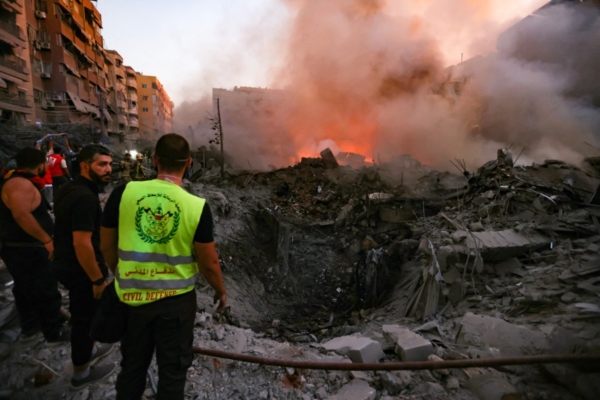On September 27, Israel conducted a destructive airstrike on the secret underground headquarters of Hezbollah in Lebanon. Despite the headquarters being hidden beneath a high-rise building, it could not withstand the bombardment of Israeli bombs, resulting in the death of Hezbollah leader Hassan Nasrallah and others. According to US senators, the Israeli military used 2,000-pound American-made precision-guided bombs.
Chairman of the Subcommittee on Air and Land Forces of the United States Senate Armed Services Committee, Mark Kelly, revealed in an interview with NBC that Israel targeted Nasrallah with 2,000-pound (900 kg) Mark 84 series bombs. This marked the first time the US disclosed the weapons used by Israel in the operation.
Kelly stated, “We are seeing an increased use of JDAM precision-guided munitions, and we continue to provide these weapons.”
JDAM refers to Joint Direct Attack Munition.
“The 2,000-pound bomb used to kill Nasrallah was from the Mark 84 series,” he said.
While the Israeli military confirmed the strike that killed Hezbollah leader Nasrallah, they declined to comment on the specific weapons used. The Pentagon has also refrained from making any statements regarding Kelly’s revelations.
JDAM transforms unguided conventional bombs into precision-guided weapons. The United States has been a long-standing ally of Israel and a major supplier of weapons.
Kelly emphasized that by eliminating Nasrallah, Israel sent a “strong message” to the Iran-backed Hezbollah.
According to reports from The Wall Street Journal, Israeli Air Force used approximately 80 tons of bombs in total to target Nasrallah’s hideout. An Israeli senior military official mentioned that a series of chain explosions were utilized to penetrate the underground bunker during the attack.
The Israeli Defense Forces announced on Sunday that in the airstrike on September 27, over twenty Hezbollah members of various ranks present in the underground headquarters in Beirut were eliminated, including Ibrahim Hussein Jazini, head of Nasrallah’s security team.
Reportedly, the airstrikes left craters with a diameter of up to five meters (16 feet).
Citing Middle East expert James Dorsey, the media reported that the airstrike symbolized a “highly complex” “war of intelligence.”
“This not only showcases Israel’s formidable technological capabilities but also reveals how deeply Israel has infiltrated Hezbollah,” he stated.
On Sunday, Israel continued targeting Hezbollah in Lebanon. The IDF announced that on Sunday evening, Israeli forces conducted extensive airstrikes on Hezbollah targets across Lebanon. Dozens of fighter jets participated in these airstrikes, targeting around 120 Hezbollah positions in Southern Lebanon and throughout the country.
The IDF described these airstrikes as a “significant blow” to Hezbollah’s command and control.
(Partial information sourced from Reuters.)

